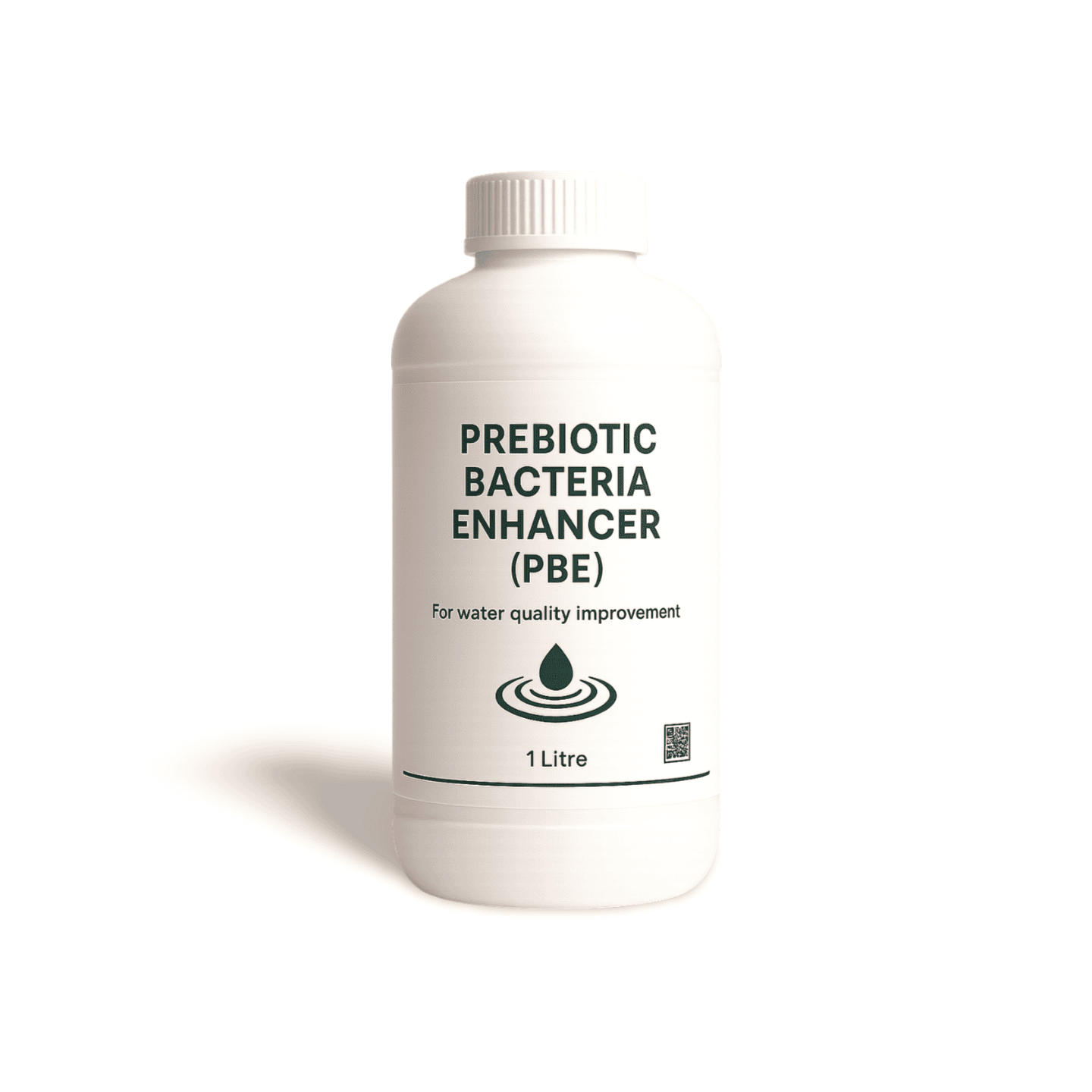Targeted nutrition for beneficial bacteria
Our Prebiotic Bacteria Enhancer supplies readily-assimilable carbon and micronutrients that selectively feed existing beneficial microbes in ponds and lakes. By boosting microbial activity at the sediment-water interface, it helps convert nutrients into biomass, reduce odours, and stabilise clarity.

Fast Facts
- Non-biocidal formulation; supports natural microbial processes.
- Optimises carbon:nitrogen:phosphorus (C:N:P) balance for clarity and stability.
- Pairs well with SeDox Max (P-binding) and SchlixX Plus (sediment digestion).
- Easy to dose; suitable for ponds, lakes, and closed-loop waterbodies.
Prebiotic inputs → stronger bio-processing
By supplying the right blend of bioavailable carbon and trace nutrients, the enhancer increases aerobic microbial activity at the benthic layer. This helps convert dissolved nutrients into stable microbial biomass, reduces internal nutrient recycling, and supports odour reduction through healthier redox conditions.
Where it fits
- When water is nutrient-rich but carbon-limited (imbalanced C:N:P).
- As a booster alongside SeDox Max and SchlixX Plus.
- During start-up/shoulder seasons to stabilise water quality before peak temperatures.
Application guidance
Dose depends on volume, flushing, and objectives. Typical ranges:
| Objective | Guide Dose | Notes |
|---|---|---|
| Start-up / kick-off | 0.5–1.0 L per 1,000 m³ | Prime beneficial microbes at season start or after turnover. |
| Maintenance | 0.25–0.5 L per 1,000 m³ / month | Adjust to monitoring (DO, clarity, nutrients, odour). |
| High-load events | Up to 1.5 L per 1,000 m³ | Heavy organics or after extreme weather—reassess after 1–2 weeks. |
Always confirm with a site-specific plan. Apply evenly across the surface or at inlets for best distribution.
Frequently Asked Questions
Is this a biocide?
Can I use it with SeDox Max or SchlixX Plus?
How soon will I see results?
Ready to boost beneficial bacteria?
We’ll design a dosing plan matched to your waterbody and goals.


